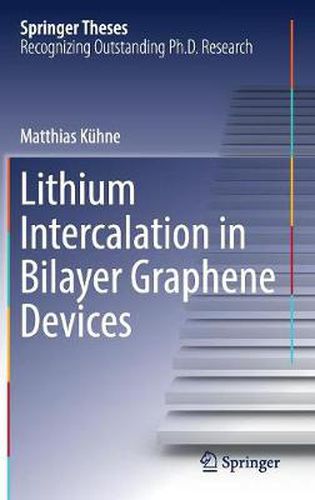Readings Newsletter
Become a Readings Member to make your shopping experience even easier.
Sign in or sign up for free!
You’re not far away from qualifying for FREE standard shipping within Australia
You’ve qualified for FREE standard shipping within Australia
The cart is loading…






This title is printed to order. This book may have been self-published. If so, we cannot guarantee the quality of the content. In the main most books will have gone through the editing process however some may not. We therefore suggest that you be aware of this before ordering this book. If in doubt check either the author or publisher’s details as we are unable to accept any returns unless they are faulty. Please contact us if you have any questions.
This book reports on the successful implementation of an innovative, miniaturized galvanic cell that offers unprecedented control over and access to ionic transport. It represents a milestone in fundamental studies on the diffusive transport of lithium ions between two atomically thin layers of carbon (graphene), a highly relevant aspect in electrodes for energy and mass storage in the context of batteries. Further, it is a beautiful example of how interdisciplinary work that combines expertise from two very distinct fields can significantly advance science. Machinery and tools common in the study of low-dimensional systems in condensed matter physics are combined with methods routinely employed in electrochemistry to enable truly unique and powerful experiments.
The method developed here can easily be generalized and extended to other layered materials as well as other ionic species. Not only the method but also the outcome of its application to Li diffusion and intercalation in bilayer graphene is remarkable. A record chemical diffusion coefficient is demonstrated, exceeding even the diffusion of sodium chloride in water and surpassing any reported value of ion diffusion in single-phase mixed conducting materials. This finding may be indicative of the exceptional properties yet to be discovered in nanoscale derivatives of bulk insertion compounds.
$9.00 standard shipping within Australia
FREE standard shipping within Australia for orders over $100.00
Express & International shipping calculated at checkout
This title is printed to order. This book may have been self-published. If so, we cannot guarantee the quality of the content. In the main most books will have gone through the editing process however some may not. We therefore suggest that you be aware of this before ordering this book. If in doubt check either the author or publisher’s details as we are unable to accept any returns unless they are faulty. Please contact us if you have any questions.
This book reports on the successful implementation of an innovative, miniaturized galvanic cell that offers unprecedented control over and access to ionic transport. It represents a milestone in fundamental studies on the diffusive transport of lithium ions between two atomically thin layers of carbon (graphene), a highly relevant aspect in electrodes for energy and mass storage in the context of batteries. Further, it is a beautiful example of how interdisciplinary work that combines expertise from two very distinct fields can significantly advance science. Machinery and tools common in the study of low-dimensional systems in condensed matter physics are combined with methods routinely employed in electrochemistry to enable truly unique and powerful experiments.
The method developed here can easily be generalized and extended to other layered materials as well as other ionic species. Not only the method but also the outcome of its application to Li diffusion and intercalation in bilayer graphene is remarkable. A record chemical diffusion coefficient is demonstrated, exceeding even the diffusion of sodium chloride in water and surpassing any reported value of ion diffusion in single-phase mixed conducting materials. This finding may be indicative of the exceptional properties yet to be discovered in nanoscale derivatives of bulk insertion compounds.